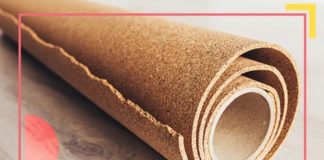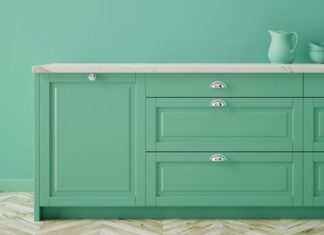
Bleach serves a dual purpose: it whitens clothes and removes tough stains. It boosts our laundry tasks because it takes over where detergents leave off. This means that if ordinary laundry detergent cannot take out the stains, using bleach would.
The only problem with regular use of bleach is that it can weaken fabrics and make them dull-looking because their colors tend to fade faster.
The general rule of thumb: read your clothing labels before using bleach. If the label says “do not bleach”, skip it!
But what is bleach exactly?
Answer: it is a chemical that whitens or removes stains through the process of oxidation. Bleach oxidizes the food stains (breaks them down into smaller components) so the stains come off more easily.
Types of Bleach
Most people are familiar with the two kinds of bleach:
Chlorine bleach – perhaps the most effective kind of bleach in the market these days. It contains about 5% of sodium hypochloride. Given its powerful action, it should first be diluted before it comes in contact with fabric. It comes in powder and liquid form. Liquid is more popular among bleach users. Chlorine bleach is also used to disinfect and sanitize other household items like kitchen counter tops and toilets.
All fabric bleach or oxygen bleach – this is bleach that is strictly for clothing, although people have used it to clean surfaces with some success. Oxygen bleach is less toxic than chlorine bleach. Even if it is labeled “all fabric” people have used it to disinfect surfaces in the home because of its hydrogen peroxide content. Two popular brands are Clorox and Legacy of Clean. The manufacturer of Legacy of Clean states that no chlorine is used because it harnesses the power of oxygen and minerals to whiten clothes and remove stains. It will also not irritate skin because it is dermatologically tested. This type of all-fabric bleach does not contain phosphates or other chemicals considered harmful to the environment. There are good reviews online for Legacy of Clean all fabric bleach. Oxygen bleach is best when used with hot water.
Using Bleach to Whiten Clothing: Instructions
Step 1: read the clothing label. If bleaching is allowed, go on to step 2.
Step 2: read the bleach manufacturer’s instructions. You will need to dilute the bleach as instructed.
Step 3: Turn on the wash cycle and then add your usual laundry detergent.
Step 4: When the wash cycle has been activated, wait five minutes and then add your bleach. The bleach has to blend well with the water and soap. Add it when the water turns soapy. Put in your clothes. (Note: it is important that the bleach is not applied directly on clothing).
Step 5: Let the laundry cycle finish.
Step 6: As soon as the laundry cycle is complete, check immediately for any color changes. If you notice any changes, rinse immediately by hand or repeat the laundry cycle without adding any detergent or bleach.
Tips for Using Bleach to Whiten Clothing
First tip: If you don’t use bleach to white your clothes that often, buy a smaller jug. Liquid chlorine bleach has a limited shelf life – six months maximum. If you use bleach that is more than six months old, it may not remove the stains as effectively.
Second tip: There is no conclusive evidence that chlorine bleach is harmful to health – although we would not recommend that you sniff it or put it in direct contact with skin too often. There was some controversy 30 years ago about the presence of dioxins which are byproducts of the chemical manufacturing process. Chlorine bleach does not contain dioxins because dioxins only come about in gaseous states. Be cautious, however because chlorine gas can form if it comes into contact with acid. This is why some chlorine product labels warn against combining chlorine with say, toilet bowl cleaners, or any products that contain acid.
Third tip: to make whites whiter, do as the Dutch did in the Middle Ages. Let your bleached clothes dry out in the sun. History tells us that the Netherlands pioneered a process called crofting. Crofting is carried out by spreading out fabrics in large open spaces for maximum exposure to the sun. In fact, Scottish textile manufacturers would ship their fabrics to Netherlands for bleaching. This process was common well before the Swedes discovered chlorine in 1774.
Fourth tip: if you’re looking for chlorine that also disinfects and kills germs, read the labels carefully. Some chlorine products will say “disinfects and kills germs.” If this does not appear on the label, don’t expect your chlorine bleach to disinfect. The Clorox line of products has a bleach that also disinfects.
Fifth tip: Chlorine bleach is chlorine, which means it is the same chlorine in your pool and in your drinking water. But if you don’t want chlorine in your water, put your drinking water in a container with a loose cover and let it stay in the refrigerator for a couple of days. The chlorine will disappear.
Sixth tip: never mix your bleach with ammonia. It will produce toxic fumes which will make you ill.
Seventh tip: to test for fabric safety because the clothing label has been torn off, mix one part bleach to two parts warm water. Using a Q-tip, apply this on an area of the fabric that is not visible – like an inside seam or the inside folds in the collar. Let it dry. If the fabric changes color, do NOT use bleach on this fabric!







































